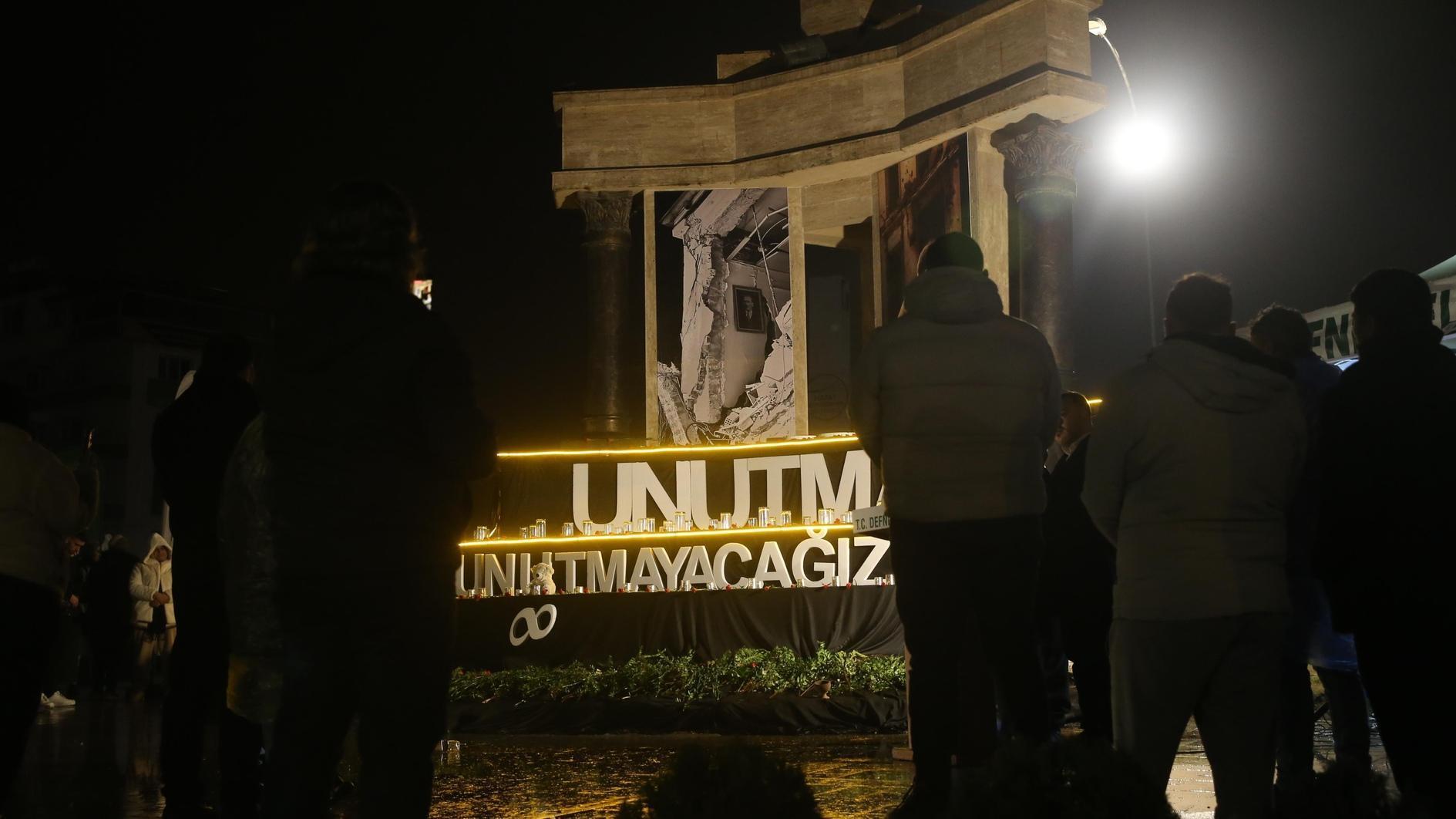
Thousands of people convened for “silent marches” in the early hours of Feb. 6 across 11 cities, amid the ruins of their former homes, commemorating those who lost their lives in the devastating earthquakes that struck Türkiye’s south two years ago.
The first tremor, a powerful 7.7 magnitude temblor, rattled the region in the early hours of Feb. 6, 2023, only to be followed by a second, equally calamitous 7.6 magnitude quake at 1:24 p.m. the same day. The disaster killed 53,537 people in the 11 southern provinces.
As one of the most catastrophic natural disasters in Türkiye’s history, the calamity displaced millions, leaving cities and survivors grappling with the arduous process of reconstruction and healing.
Hundreds of mourners solemnly placed carnations in the vacant spaces where their loved ones once lived, while cemeteries bore witness to the grief of those paying their respects.
During the “silent marches,” participants traversed the voids left by collapsed buildings, carrying photographs of the deceased and banners inscribed with “We have not forgotten.”
In Kahramanmaraş, the epicenter of the disaster, locals gathered around a clock stopped at 4:17 a.m., a haunting reminder of the moment tragedy struck. A solemn minute of silence was observed in memory of the victims, followed by the recitation of the national anthem, as many struggled to hold back tears.
In Hatay, a province steeped in the legacy of ancient civilizations and the hardest-hit region, an interfaith commemoration brought together representatives of the three Abrahamic religions, each offering prayers for the departed.
In a poignant gesture, mourners cast red carnations into the Asi River, a symbolic tribute to those lost.
President Recep Tayyip Erdoğan, reflecting on the resilience of the nation, wrote on X, “From the very first day, we have stood united as a state and as a people, never withdrawing our support from the affected regions, even for a moment.”
Later in the day, he is scheduled to attend a memorial event in Adıyaman, another province ravaged by the quakes.
“We shall persist in our monumental endeavor of rebuilding and restoring, with diligence, determination and unwavering resolve, until our cities fully rise from the ashes,” he vowed.
The tragedy remains deeply etched in Türkiye’s collective consciousness and its scars are still visibly imprinted upon the urban landscape.
Despite ongoing efforts, only a 7.78 percent decrease has been recorded in the number of citizens residing in container camps. As of January, an estimated 650,000 individuals continue to live in temporary housing.
On the other hand, reconstruction efforts across the 11 affected provinces have been advancing at a rapid pace. In 2024 alone, 201,580 residential and commercial units were handed over to owners. At the close of two years, 45 percent of the planned housing units have been delivered, with an ambitious target of 452,983 homes and workplaces set for completion by the end of 2025.
Hatay, where nearly every second building either collapsed or sustained severe damage, remains a city in limbo.
Towering construction sites, relentless excavators and colossal cranes dominate the skyline, rendering Hatay an enormous, ever-evolving construction zone.
Even in the historic Uzun Çarşı, where life timidly stirs once more, a palpable sense of exhaustion, uncertainty and despair lingers on the faces of shopkeepers. In interviews with the press, countless residents echoed the same disheartening reality.